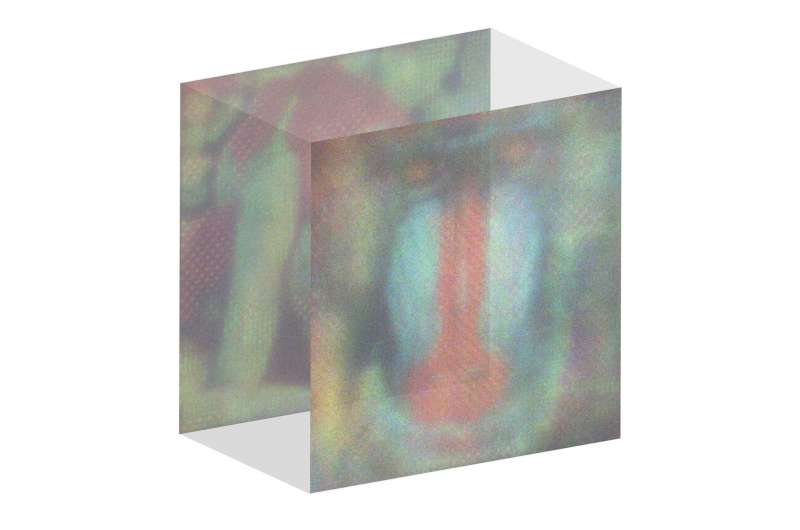This article has been reviewed according to Science X's editorial process and policies. Editors have highlighted the following attributes while ensuring the content's credibility:
fact-checked
peer-reviewed publication
trusted source
proofread
Researchers use smartphone screen to create 3D layered holographic images

Researchers have developed a 3D full-color display method that uses a smartphone screen rather than a laser to create holographic images. With further development, the new approach could be useful for augmented or virtual reality displays.
Whether augmented and virtual reality displays are being used for gaming, education, or other applications, incorporating 3D displays can create a more realistic and interactive user experience.
"Although holography techniques can create a very real-looking 3D representation of objects, traditional approaches aren't practical because they rely on laser sources," said research team leader Ryoichi Horisaki from The University of Tokyo in Japan. "Lasers emit coherent light that is easy to control, but they make the system complex, expensive, and potentially harmful to the eyes."
In Optics Letters, the researchers describe their new method, which is based on computer-generated holography (CGH). Thanks to a new algorithm they developed, they were able to use only an iPhone and an optical component called a spatial light modulator to reproduce a 3D color image that consisted of two holographic layers.
"We believe that this method could eventually be useful for minimizing the optics, reducing costs, and decreasing the potential harm to eyes in future visual interfaces and 3D display applications," said Otoya Shigematsu, the paper's first author. "More specifically, it has the potential to enhance the performance of near-eye displays, such as the ones being used in high-end virtual reality headsets."
A more practical approach
Although CGH uses algorithms to produce images, coherent light from a laser is typically required to display these holographic images. In a previous study, the researchers showed that spatiotemporally incoherent light emitted from a white chip-on-board light-emitting diode could be used for CGH. However, this setup required two spatial light modulators—devices that control the wavefronts of light—which is impractical because of their expense.
In the new study, the researchers developed a less expensive and more practical incoherent CGH method. "This work aligns with our laboratory's focus on computational imaging, a research field dedicated to innovating optical imaging systems by integrating optics with information science," said Horisaki. "We focus on minimizing optical components and eliminating impractical requirements in conventional optical systems."
The new approach passes light from the screen through a spatial light modulator, which presents multiple layers of a full-color 3D image. Although this may seem simple, it required carefully modeling the incoherent light propagation process from the screen and then using this information to develop a new algorithm that coordinated the light coming from the device screen with a single spatial light modulator.
Holographic images from a smartphone
"Holographic displays that use low-coherence light could enable realistic 3D displays while potentially reducing costs and complexity," said Shigematsu. "Although several groups, including ours, have demonstrated holographic displays using low-coherence light, we took this concept to the extreme by using a smartphone display."
To demonstrate the new method, the researchers created a two-layer optical reproduction of a full-color 3D image by displaying one holographic layer on the screen of an iPhone 14 Pro and a second layer on a spatial light modulator. The resulting image measured a few millimeters on each side.
The researchers are now working to improve the technology so that it can display larger 3D images with more layers. Additional layers would make images look more realistic by improving spatial resolution and allowing objects to appear at several different depths, or distances, from the viewer.
More information: Otoya Shigematsu et al, Computer-generated holography with ordinary display, Optics Letters (2024). DOI: 10.1364/OL.516005
Journal information: Optics Letters
Provided by Optica





















